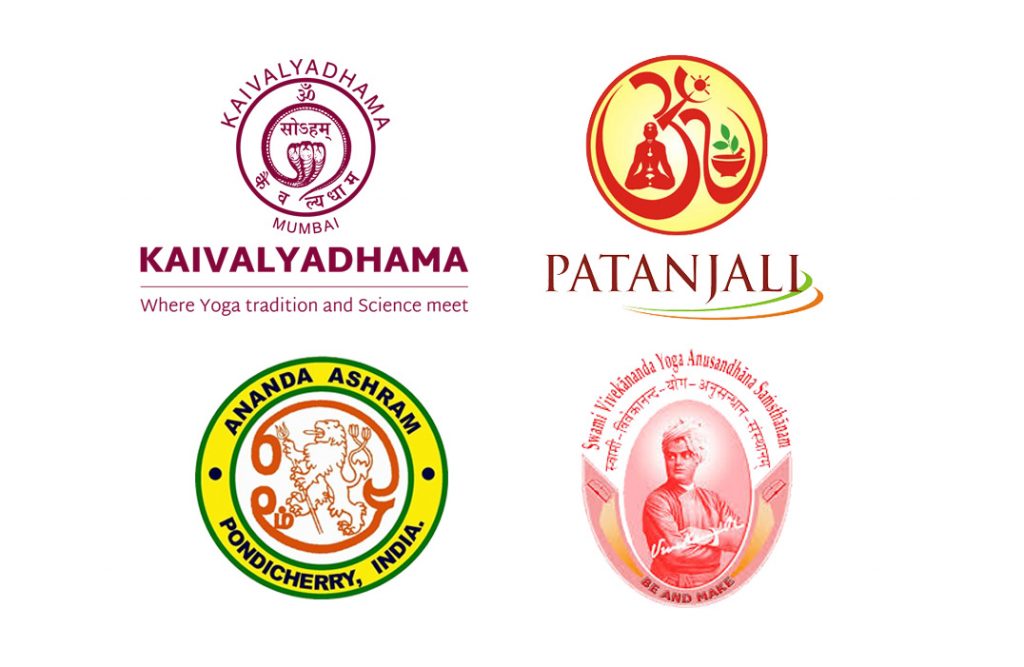Research is extremely important to support different approaches to health care. In the recent past, Yoga has been gaining lot of attention as Yoga Institutes, reseachers, scholars have started offering substantive clinical research evidence. In this issue, Indian Yoga Association brings to you the Research Papers published by our Member Institutes and other Institutes or individuals on Yoga and Pranayama
International Centre for Yoga Education and Research
Immediate Effect of Sukha Pranayama on Cardiovascular Variables in Patients of Hypertension
Author: Ananda Balayogi Bhavanani, Zeena Sanjay, Madanmohan
Published In: International Journal of Yoga Therapy
Published On: 2011
Abstract: Hypertension is one of the most common health disorders, and yoga has been shown to be an effective adjunct therapy in its management. Earlier studies have reported blood pressure (BP)-lowering effects of slow,deep breathing after 3 weeks and 3 months of training and beneficial immediate effects of slow, deep breathing in reducing premature ventricular complexes and lowering blood pressure. None of these immediate studies used the concept of pranayama, involving conscious internal awareness of the whole breathing process. This study was undertaken to determine the immediate cardiovascular effects of sukha pranayama in hypertensive patients. Methods: Twenty-three hypertensive patients attending the Yoga OPD at JIPMER were recruited for the study and instructed to perform sukha pranayama for 5 minutes at the rate of 6 breaths/min. This pranayama involves conscious, slow and deep breathing with equal duration for inhalation and exhalation. Heart rate (HR) and BP were recorded before and immediately after the intervention. Results: Post-intervention statistical analysis revealed a significant (p < .05) reduction in HR and a highly significant (p < .001) reduction in systolic pressure, pulse pressure, mean arterial pressure, rate-pressure product, and double product with an insignificant fall in diastolic pressure. Discussion: It is concluded that sukha pranayama at the rate of 6 breaths/minute can reduce HR and BP in hypertensive patients within 5 minutes of practice. This may be due to a normalization of autonomic cardiovascular rhythms as a result of increased vagal modulation and/or decreased sympathetic activity and improved baroreflex sensitivity. Further studies are required to understand possible mechanisms underlying this beneficial immediate effect and to determine how long such a beneficial effect persists.
Kaivalyadhama
O2 Absorption and CO2 Elimination in Pranayama
Author: Swami Kuvalayananda
Published In: Yoga Mimamsa, 4(4), 267-289
Published On: 1933
Abstract: Progressive reduction in O2 consumption and CO2 elimination was seen during one round of Pranayama of 14, 21, 28, and 35 seconds duration with varying ratios of 1:1 to 1:4 for Puraka-Rechaka and 1:1:2 to 1:2:2 for Puraka-Kumbhaka-Rechaka.
Retention of breath (Kumbhaka) seems to have very little influence on gaseous exchange even though it is highly advocated in different varieties of Pranayama.
Patanjali Research Foundation
Post-traumatic stress symptoms and heart rate variability in Bihar flood survivors following yoga: A randomized controlled study
Author: Shirley Telles, Nilkamal Singh, Meesha Joshi & Acharya Balkrishna
Published In: BMC Psychiatry
Published On: March 2010
Abstract: An earlier study showed that a week of yoga practice was useful in stress management after a natural calamity. Due to heavy rain and a rift on the banks of the Kosi river, in the state of Bihar in north India, there were floods with loss of life and property. A week of yoga practice was given to the survivors a month after the event and the effect was assessed.
Twenty-two volunteers (group average age ± S.D, 31.5 ± 7.5 years; all of them were males) were randomly assigned to two groups, yoga and a non-yoga wait-list control group. The yoga group practiced yoga for an hour daily while the control group continued with their routine activities. Both groups’ heart rate variability, breath rate, and four symptoms of emotional distress using visual analog scales, were assessed on the first and eighth day of the program.
There was a significant decrease in sadness in the yoga group (p < 0.05, paired t-test, post data compared to pre) and an increase in anxiety in the control group (p < 0.05, paired t-test, post data compared to pre).
A week of yoga can reduce feelings of sadness and possibly prevent an increase in anxiety in flood survivors a month after the calamity.
Swami Vivekananda Yoga Anusandhana Samsthana (SVYASA)
Effects Of Yoga On Cardiac Health Sleep Quality, Mental Health And Quality Of Life Of Elderly Individuals With Chronic Ailments: A Single Arm Pilot Study
Author: Ashwinin Hegde, Kashianth Metri, Promila Chwadhary, Natesh Babu, H R Nagendra
Published On: Volume 6, Issue 1, June 2017
Published In: Voice of Research
Abstract: There is a high prevalence of chronic health problems in elderly persons which significantly affects their mental health, sleep quality and quality of life (QoL). Practice of yoga known to enhance physical and mental health. Present pilot study intended to evaluate the effects of Integrated Yoga (IY) practice on sleep quality, mental health and QoL of elderly individuals suffering from chronic health condition(s). Twenty-eight elderly persons residents of Bangalore, India (13 males) within the age range 65-80 years (with group mean±SD; 68.8±5.4 yrs) having chronic health problem(s) underwent 1 month of IY, 60 minutes/day for 6 days/week. We excluded the subjects if they; had compromised cardiac functioning; were on sleep medication; underwent abdominal surgery; were on anti-psychotic medications; had exposure to any form of yoga in past one year. All the subjects were assessed for cardiac variables, mental health parameters, sleep quality and quality of life at baseline after one month. It was observed a significant decrease in pulse rate (p<.001), respiratory rate (p<.001), Systolic BP (p=.001), Diastolic BP (P<.001), perceived stress (p<.001), fasting sugar (p<.001, -11.97%), anxiety (p<.001), depression, (p<.001), along with significant improvements in sleep quality (p<.001) and quality of life (p<.002) after one month of IY intervention compared to baseline.
